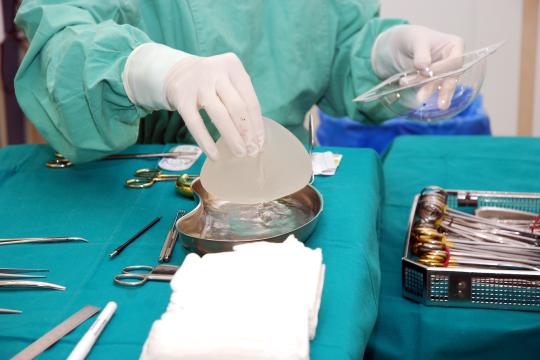
Your chronological age, genetics, exposure to the sun and certain lifestyle factors all play a role in how well your skin ages. Of the many ways your doctor can help you reverse the signs of aging, dermal fillers are considered a godsend by those who use them for their ability to restore lost volume and help turn back the hands of time without having to undergo invasive surgery. Dermal fillers such as Juvederm, Restylane, Perlane, Aretefill and more are used to contour the face, plump thinning lips, soften wrinkles and even diminish the look of certain scars.
The traditional method for administering fillers is with an extra sharp needle -- after all, it does need to enter the skin -- and many injectors use this method and are very happy with it. The way the needle method works is it pierces the skin so the filler can be injected into the proper place directly into the tissue below it. Though this method has been used with great success for the many years dermal fillers have been around, large numbers of doctors have switched over to the micro-cannula because some feel it offers them advantages over a needle. Decisions, decisions…which is the better choice when injecting fillers?
Indianapolis based board-certified plastic surgeon, Dr. Bruce Van Natta, likes the micro-cannula for increased patient safety and less downtime. He says, "There are far less risks with a micro-cannula since it has a blunt tip and won’t typically cause as much bruising. Most importantly, the chances of directly injecting a vessel are very much reduced." Unlike the needle, the micro-cannula doesn't have a sharp tip, its ports are on the side, and most micro-cannulas are flexible, too. The injector still needs to pierce the surface of the skin with the needle to make a small opening to insert the cannula, but because the tip is rounded, it can push aside any important structures beneath the skin out of the way instead of indiscriminately piercing through tissue and causing additional bruising, swelling or possible complications. During the procedure, if a vessel, nerve or other structure isn't pushed to the side the injector can feel a slight resistance and should be able to work around it since it is flexible. Cannulas tend to be longer than in length than a needle so numerous areas can be filled from just a single entrance point meaning less trauma to the skin and less recovery time.
When it comes to the micro-cannula, there's not much of a learning curve. In fact, Dr. Van Natta adds, "for the experienced injector, no additional training should be required.” He also says:
- The personal preference of the physician will determine which sized cannula is used. For example, a larger bore cannula might be chosen for a thicker injectable to make the injection process easier or your injector might prefer doing a direct dermal injection with a needle for certain fillers and not others.
- The micro-cannula is not useful for neurotoxin injections like Botox, Xeomin or Dysport since only minute volumes are being placed through multiple small skin sticks.
- From a patient safety standpoint, the use of micro-cannula is a significant advance towards achieving optimal patient outcomes while minimizing complications— especially helping to avoid an intra-arterial injection which can result in major complications.
Some doctors prefer to stick with the needle method while others extol the virtues of the micro-cannula but all things being equal, in the hands of a highly experienced injector I'd take 4 sticks instead of 40 for less discomfort, less chance of bruising and less marks left behind, wouldn't you? Keep in mind that like all forms of cosmetic procedures, the tools being used are just that. Their proper use relies on the fastidious knowledge and skill of your injector and as is the case with all aesthetic procedures, it's particularly important to share your doctor's aesthetic viewpoint.
Click here to find a board-certified cosmetic surgeon in your area.





